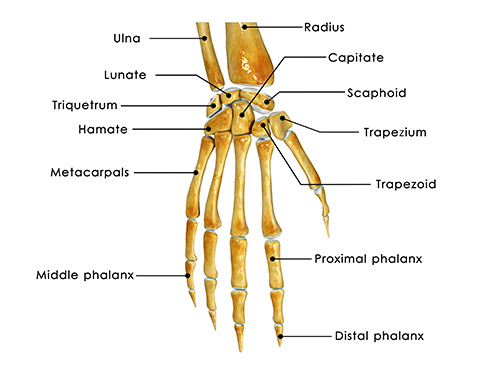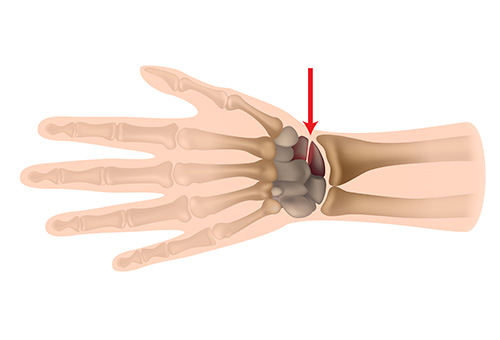| What are Scaphoid Fractures?29 August 2017 Unlike certain wrist injuries, scaphoid fractures are common for people of all ages and can occur during virtually any activity. While not particularly dangerous, this type of fracture is sometimes difficult to recognise and treat properly, which can lead to further complications and even surgery. Here at WristSupports.co.uk, we have prepared a short guide that will help you recognise a scaphoid fracture in time and find the right treatment for your condition. Where is the Scaphoid Located?There are eight carpal bones located in your hand and wrist, with the scaphoid being the one most prone to fractures and injury. It is located on the thumb side of the wrist, just above the radius, and plays a crucial role in maintaining the stability of your wrist.
How Does a Scaphoid Fracture Usually Occur?A scaphoid fracture most often occurs when you fall onto your outstretched hand, which means that your palm is flat and stretched out, while the wrist is bent backward. This type of injury is common for people of all ages, including children. There are no specific risk factors or diseases that would make one more prone to sustaining a scaphoid fracture. Studies have shown, however, that using wrist guards during high-intensity activities, such as sports, can decrease the chances of breaking the scaphoid bone. How Do I Recognise a Scaphoid Fracture?This type of a fracture is usually easy to recognise, as the pain first occurs right after a fall or a blow to the hand. Some of the most common symptoms include:
As the pain may not be too severe, the injury is often mistaken for simple wrist pain and therefore not treated immediately, which can cause complications later on. If you suspect you may have suffered a scaphoid fracture, seek medical attention right away to get a proper diagnosis.
Treatment OptionsThere are different treatments available and selecting the right one depends on a number of factors, including:
The most common non-surgical treatment of the fracture is putting the arm in a cast, usually a plaster cast, for six to eight weeks. If the bone fragments are displaced, surgery is usually the only option. Do you have a question to ask or something to add? Why not leave us a comment below or find us on Facebook or Twitter. |
FREE UK DELIVERYon orders of £40 and over. EXPERT CUSTOMER SUPPORTRead our reviews. EASY PRODUCT RETURNSwith our 30 day returns policy. |


